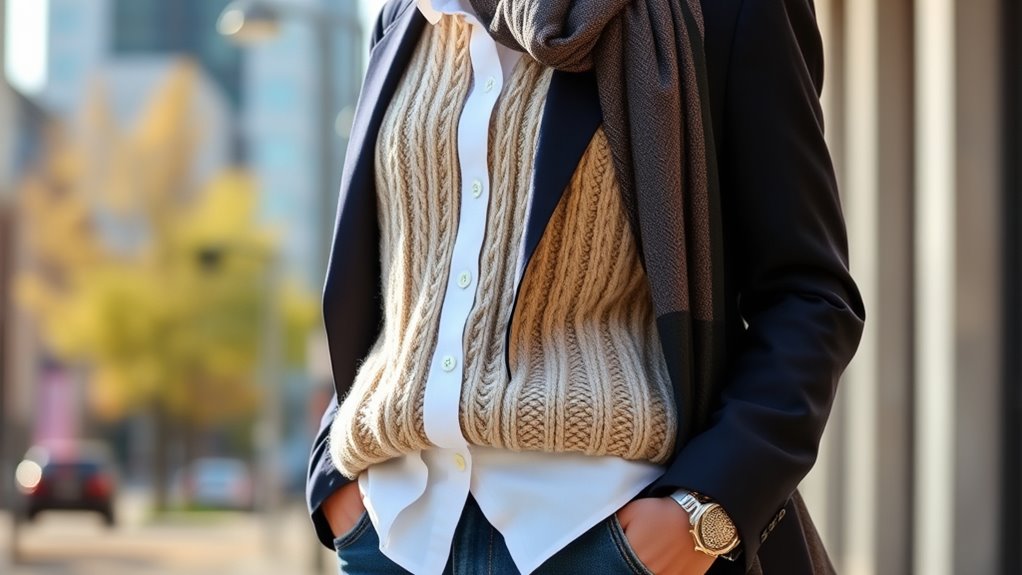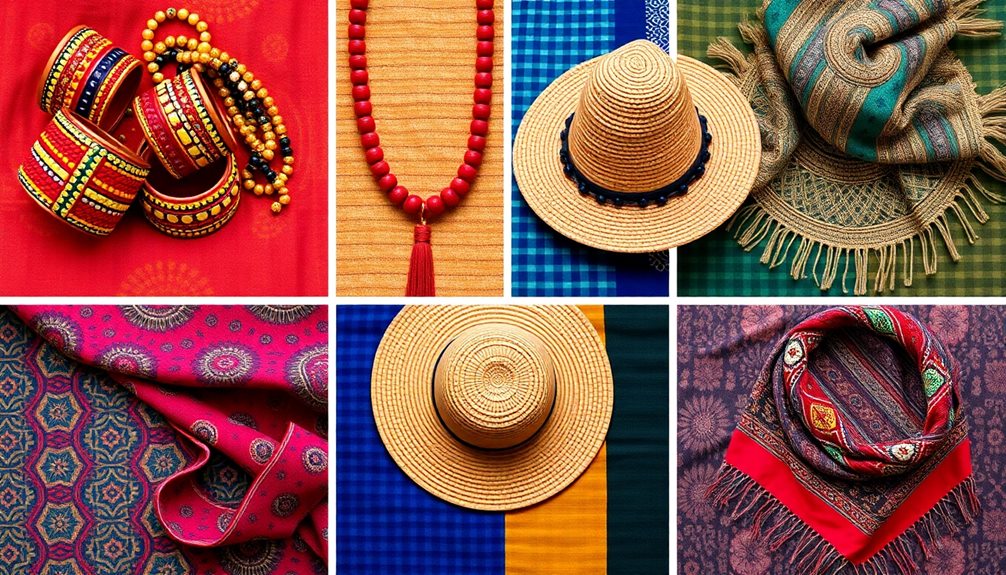To layer clothes for style and comfort, start with a fitted, moisture-wicking base layer that keeps you dry. Add an insulating middle layer for warmth, like a sweater or fleece. Top with a protective outer layer to shield against wind and rain. Mix textures and fitted with loose pieces for visual interest. Adjust your layers based on activity and weather for versatility. Keep exploring for tips to perfect your layering technique and stay comfortable no matter the forecast.
Key Takeaways
- Start with a snug, moisture-wicking base layer to keep skin dry and comfortable.
- Add an insulating middle layer, like a sweater or fleece, for warmth.
- Top with a protective outer layer, such as a waterproof jacket, to shield against elements.
- Mix fitted and loose pieces for visual interest and ease of movement.
- Adjust layers based on activity level and weather changes for optimal comfort and style.
Understanding the Basics of Layering
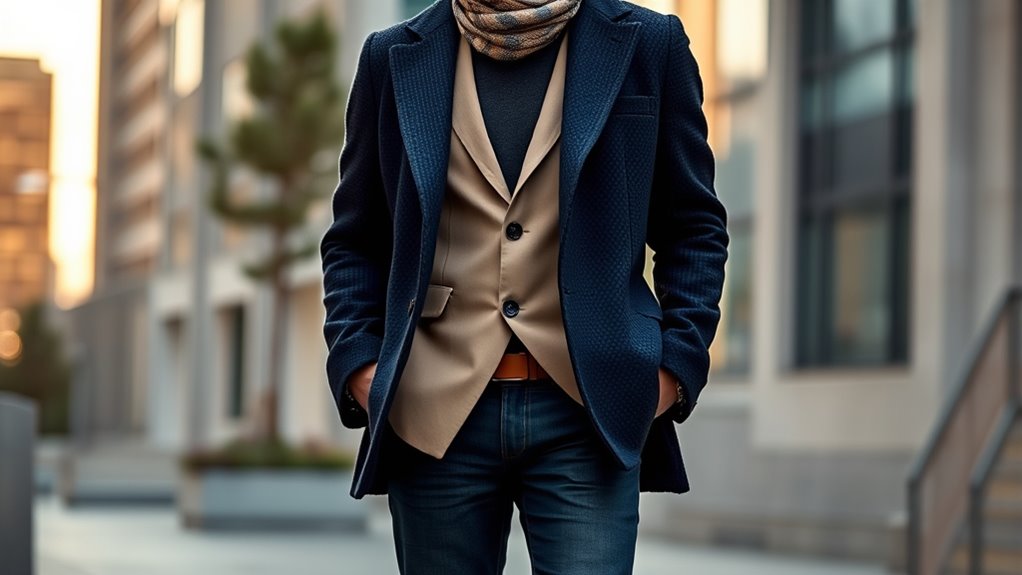
Layering clothes effectively starts with understanding the basics. First, you need to grasp the purpose of layering: adding warmth, flexibility, and style. Think of it as building a wardrobe puzzle where each piece fits together seamlessly. Start with a close-fitting base layer that wicks away moisture; this keeps you dry and comfortable. Then, add an insulating layer for warmth, which traps heat close to your body. Layering techniques can be used to serve hot beverages or meals that complement your layered outfit, enhancing your overall experience. Additionally, choosing the right materials for each layer can significantly impact comfort and functionality. Incorporating AI safety measures into your routine can help you recognize and adapt to changing weather conditions more effectively. Finally, top it off with a protective outer layer that shields you from wind and rain. Always consider how each layer interacts—each should be breathable, easy to remove or add, and not bulky. Incorporating the role of sleep and mental health into your routine can also improve your overall comfort and well-being, making your layering experience more enjoyable. Knowing these fundamentals helps you create versatile outfits suited for any weather while maintaining comfort and style.
Choosing the Right Materials for Layering
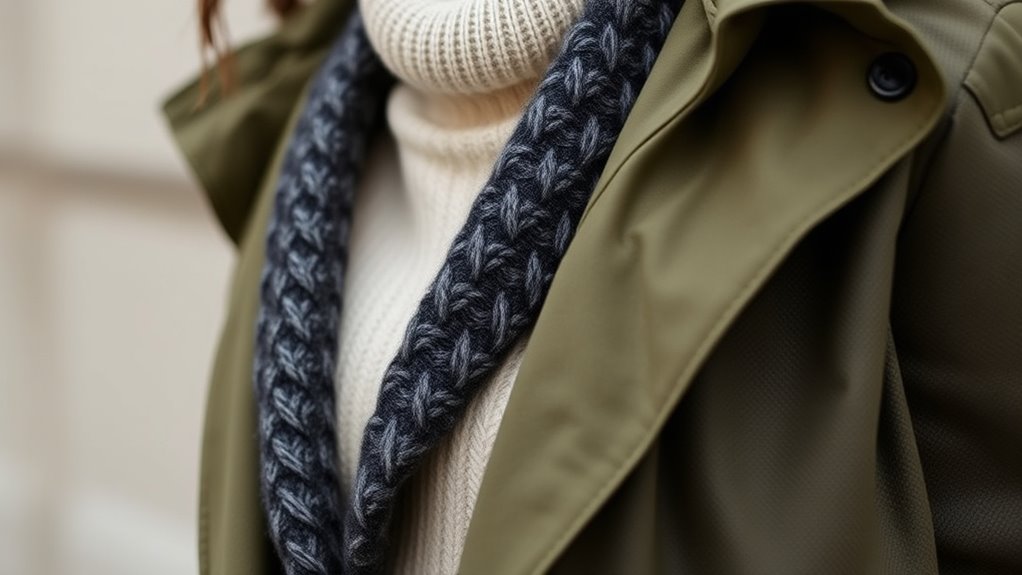
Choosing the right materials for your layers guarantees they work together effectively and keep you comfortable in varying conditions. You want fabrics that balance warmth, breathability, and moisture-wicking. Natural fibers like wool and cotton feel cozy and breathable but may not wick moisture well. Synthetic materials like polyester and nylon dry quickly and provide insulation without adding bulk. Consider layering a moisture-wicking base layer to stay dry, an insulating mid-layer for warmth, and a waterproof outer shell for protection against the elements. When selecting materials, think about your activity level and climate. Incorporating textile lines such as crochet or knitting techniques can also add a stylish touch to your layered outfits. Understanding fabric performance can help you choose materials that are best suited for your needs. For instance, some fabrics are specifically designed for performance in extreme weather, ensuring your comfort and protection in challenging conditions. Additionally, choosing fabrics with natural antioxidant properties can enhance your comfort and skin health during prolonged wear. Being aware of durability and maintenance can also help in selecting materials that will last longer and require less care. The right combination can transform your layering game from uncomfortable to perfectly suited for any weather.
Building a Balanced and Stylish Outfit

Creating a balanced and stylish outfit involves selecting pieces that complement each other in both form and function. Start by choosing a statement piece, like a bold top or patterned pants, then build around it with neutral layers that add depth without overwhelming your look. Mix fitted and loose items to create visual interest and guarantee comfort. Consider the proportions of your clothing—pair a long tunic with slim jeans or a cropped jacket with high-waisted pants. Keep accessories minimal but intentional, like a sleek watch or delicate jewelry, to elevate your style. Balance colors and textures to create harmony, avoiding clashing patterns or overly busy combinations. Incorporating layering techniques can also enhance the overall look and functionality of your outfit. Staying updated with tech trends can inspire innovative ways to incorporate smart accessories or fabrics into your wardrobe. Additionally, understanding Fokos can provide inspiration for stylish and comfortable clothing choices that reflect current trends. Being aware of automation in fashion manufacturing could help you choose pieces made with sustainable and efficient processes. Exploring different textured fabrics can add richness and tactile interest to your outfits. Ultimately, aim for outfits that highlight your personality while feeling comfortable and cohesive.
Practical Tips for Effective Layering
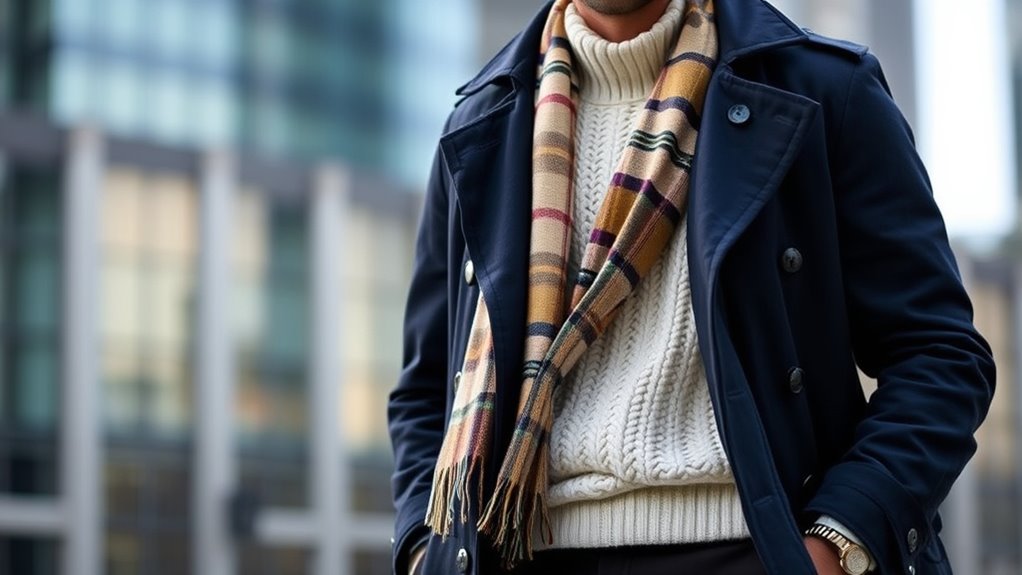
To master effective layering, focus on practical strategies that enhance both your style and comfort. Start with lightweight, breathable base layers that wick moisture away. Choose versatile mid-layers like sweaters or cardigans for added warmth and texture. Top it off with outer layers that are easy to remove or add, depending on the weather. Remember, fit is essential—clothes should be snug but not tight, allowing movement and airflow. Keep these tips in mind:
- Mix textures and colors for visual interest and personality.
- Prioritize comfort over trends—your layers should feel good all day.
- Plan for flexibility by choosing pieces that can be easily adjusted or removed.
- Incorporate layering techniques to optimize both warmth and style in different environments, and consider the contrast ratio of your outfit to ensure visual harmony and balance. Additionally, understanding clothing materials can help you select the best fabrics for different weather conditions and layering purposes. Recognizing soulmate angel numbers can also guide you in making emotional and spiritual connections that influence your personal growth and style choices. For example, selecting appropriate headphones can improve your listening experience whether you’re indoors or outdoors, just as choosing the right clothing layers enhances comfort and functionality.
Following these tips helps you stay comfortable, stylish, and confident in any situation.
Adapting Your Layers for Different Weather Conditions
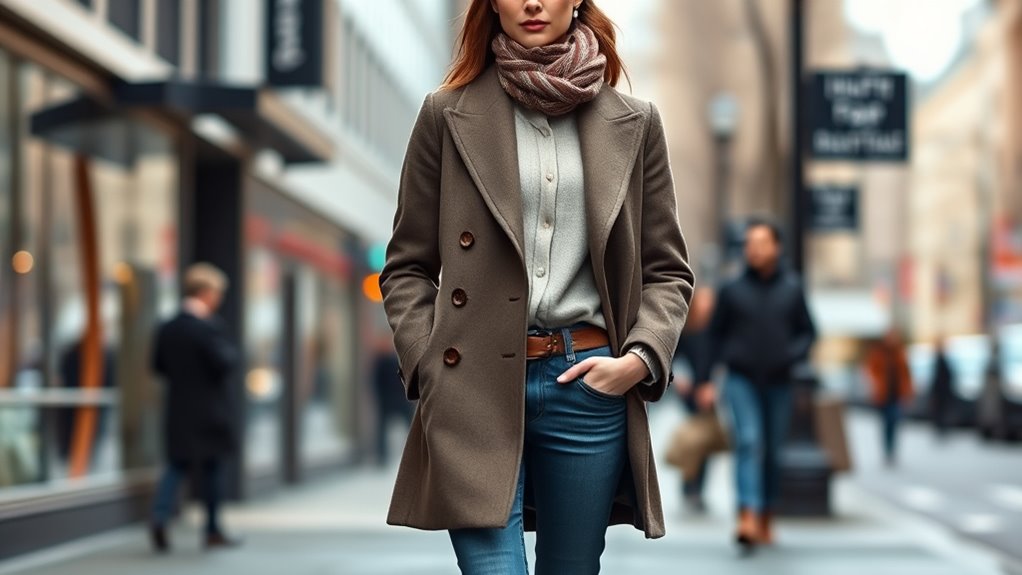
Weather conditions can alter quickly, so adapting your layers guarantees you stay comfortable and protected throughout the day. When it’s sunny and warm, switch to lightweight fabrics like cotton or linen, and remove bulky layers. If a sudden rainstorm hits, keep a waterproof jacket or umbrella handy. Cold weather calls for insulating layers like fleece or wool, while wind can make you feel colder, so add a windbreaker over your base layers. In snowy conditions, wear moisture-wicking base layers to stay dry and prevent chill. Always check the forecast before heading out, and be ready to add or remove layers as needed. Flexibility is key to staying comfortable, no matter what the weather throws your way. Using appropriate clothing application techniques can further enhance your comfort and style in changing weather. Additionally, understanding retirement planning principles can help you prepare financially for unexpected weather-related expenses or emergencies. Recognizing the importance of layering techniques ensures you optimize both warmth and fashion in variable conditions. Proper layering also involves choosing the right fabric types to match the weather, which can greatly improve your overall comfort. Being aware of somatic therapy techniques can help you manage stress caused by sudden weather changes and stay mentally resilient.
Frequently Asked Questions
How Can Layering Be Incorporated Into Formal or Business Attire?
When incorporating layering into formal or business attire, you can add a sleek blazer over a dress shirt, or wear a fine-knit sweater beneath a tailored suit jacket. Choose slim, fitted pieces that enhance your silhouette and maintain professionalism. Use neutral colors for versatility and avoid bulky layers. These subtle layers keep you comfortable and stylish, allowing for adaptability in varying office temperatures while projecting a polished, sophisticated look.
What Are Some Common Mistakes to Avoid When Layering Clothes?
When you layer clothes, avoid common mistakes like adding bulky pieces that restrict movement or choosing colors that clash. Don’t forget to take into account fabric textures to prevent discomfort and awkward bunching. Make sure your layers fit well, so you don’t look bulky or sloppy. Also, steer clear of over-layering, which can look cluttered and feel uncomfortable. Keep it balanced, practical, and stylish for the best results.
How Does Body Shape Influence Layering Choices?
Your body shape is like the blueprint for your perfect layering plan. If you’re pear-shaped, you might want to emphasize your upper body with statement pieces and keep the hips streamlined. For apple-shaped bodies, focus on elongating your torso with V-necks or vertical lines. Hourglass figures can highlight curves with fitted layers, while rectangular shapes can create illusions of curves through strategic layering. Tailoring your layers to your shape transforms your style effortlessly.
Can Layering Help With Temperature Regulation During Outdoor Activities?
Layering definitely helps you regulate temperature during outdoor activities. By adding or removing layers, you can stay warm when it’s cold and cool when it’s hot. You can trap heat with insulating layers or wick away sweat with breathable fabrics. This flexibility keeps you comfortable and safe, no matter the weather. So, layering isn’t just about style—it’s a smart way to adapt to changing temperatures while enjoying your outdoor adventures.
What Accessories Can Enhance Layered Outfits Without Adding Bulk?
Think of accessories as the cherry on top of your layered outfit. You can add sleek scarves, delicate necklaces, or stylish hats that bring flair without bulk. A slim belt can define your waist, and trendy gloves or earrings add personality. These small touches elevate your look and keep you comfortable, proving that sometimes, less really is more—letting your layers shine without weighing you down.
Conclusion
Now that you know the ins and outs of layering, you’re ready to create outfits that are both stylish and comfortable. Think of layering as your wardrobe’s symphony, where each piece plays a part to craft harmony. With the right materials and a keen eye for balance, you can weather any weather in style. So go ahead, mix, match, and layer—your perfect look is just a few smart choices away!
